Southern Africa - South Africa, Botswana, Zimbabwe, Zambia, Namibia
August 23 - September 15, 2016
Part Five, Page Three - Impalila Island, Namibia
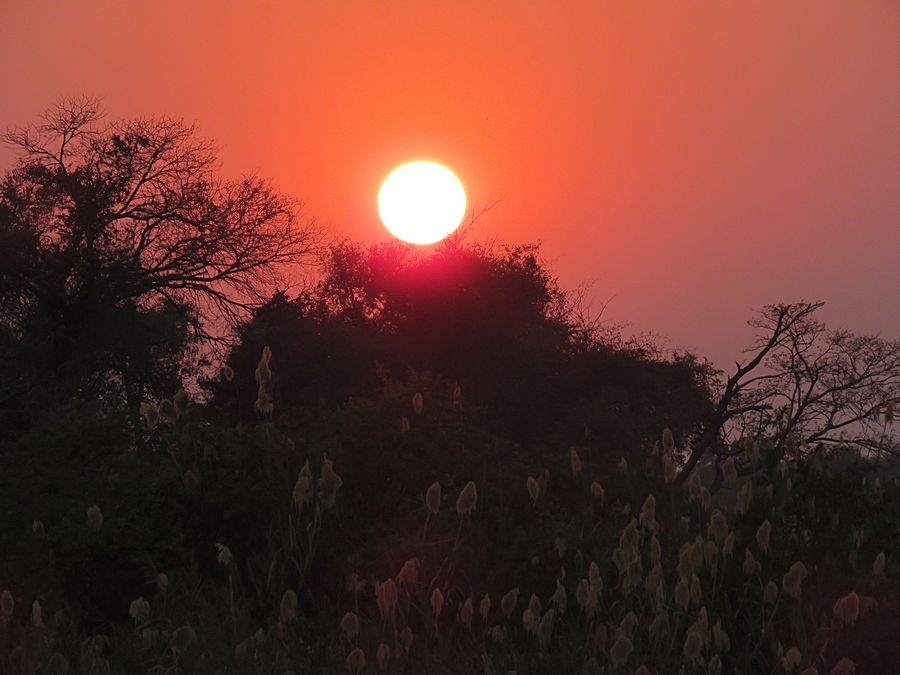
Sunrise the next day as seen from the back
of my cabin.
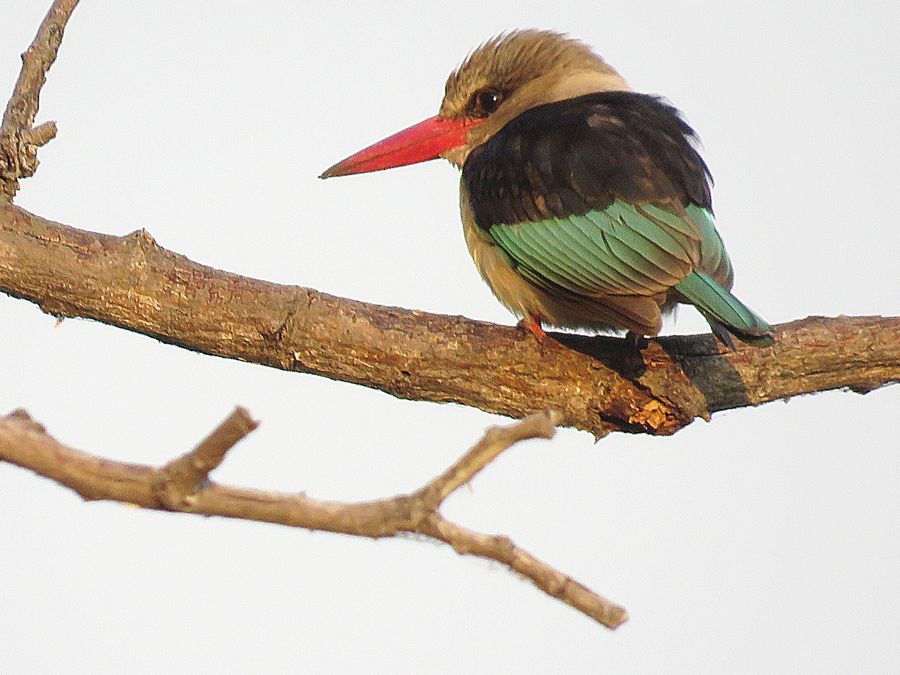
Brown-hooded Kingfisher - Feeds mainly on large insects.
Forehead, crown, and nape are brownish/buff with dark
streaking. A broad white collar circles its neck. The bill is reddish.
Legs and feet are pale orange.
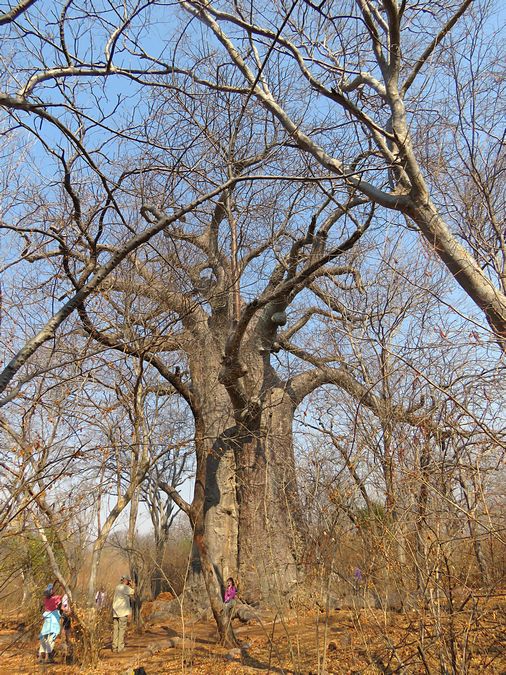
2000 year old baobab tree that we walked from our lodge to see.

Me sitting on a root
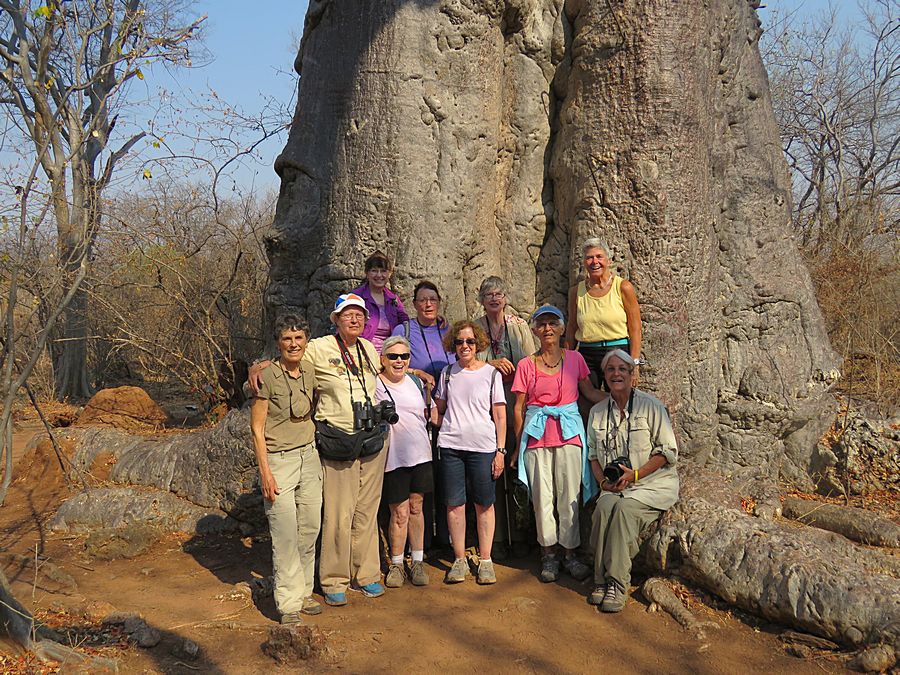
The group: Pat, Ellen, Judy, Carol, Beth, Sheila in front
Barbara, Barbara, Julie, Carole in back
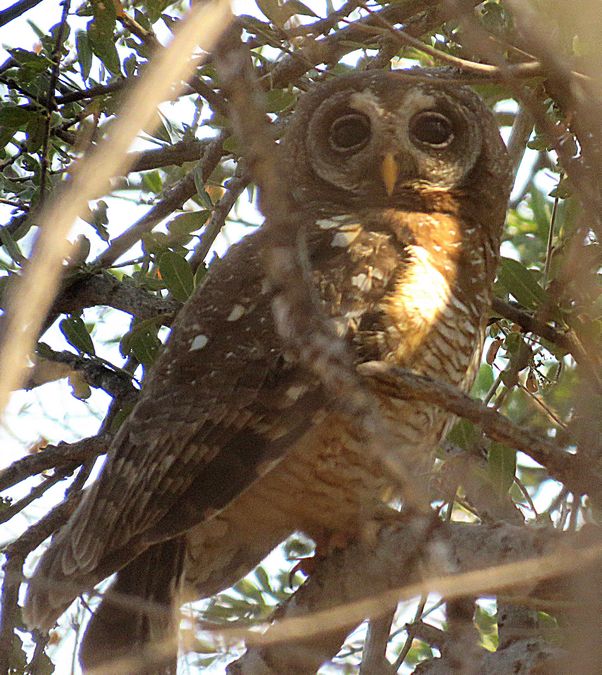
An African Wood Owl had a nest in the baobab tree, but flew to
a nearby tree. The owl was very difficult to see due to
dense vegetation and the tree limbs. Our guide Tapiwa found
an egg in the owl nest at the top of the baobab after climbing
the tree using metal grips that had been pounded into the tree trunk.
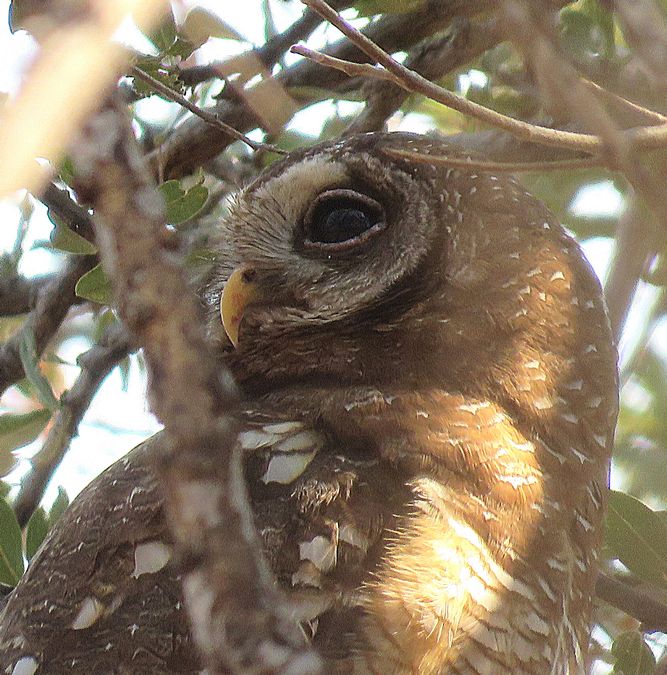
The African Wood Owl resides in dense woodlands and
evergreen forests. They are nocturnal and roost during
daylight hours in thick vegetation and foliage high in treetops.
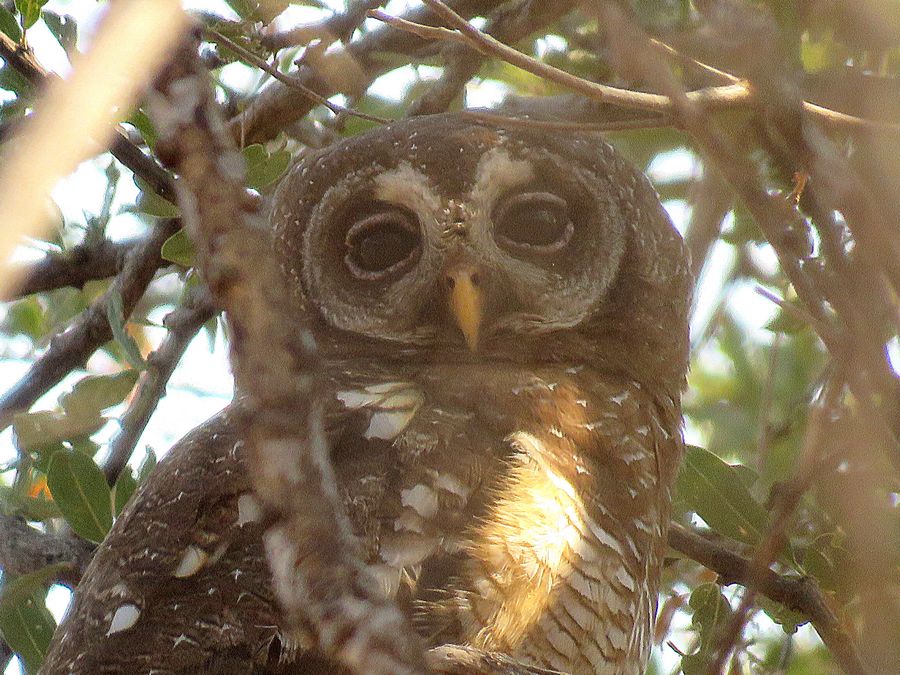
They hunt from a perch, watching for the movement of prey
below, taking grasshoppers, cockroaches, cicadas, frogs,
snakes and roosting birds.
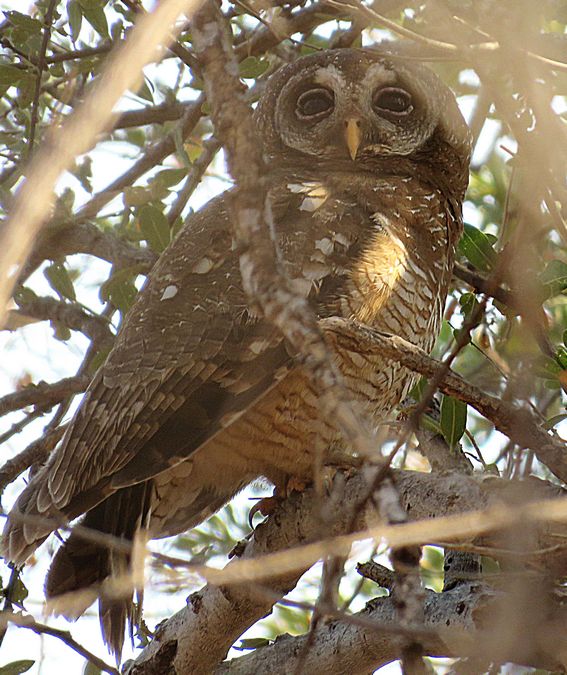
It breeds from July to October and lays 1 to 3 eggs in a hollow
in a tree, incubation starts with the first egg so that the young
hatch one at a time. If food is short then siblicide occurs.
The eggs are incubated for about 31 days. Five weeks after
the eggs hatch, the young will leave the nest and can fly two
weeks later. The young will remain with the parents for about
four months and will sometimes stay until the next breeding season.
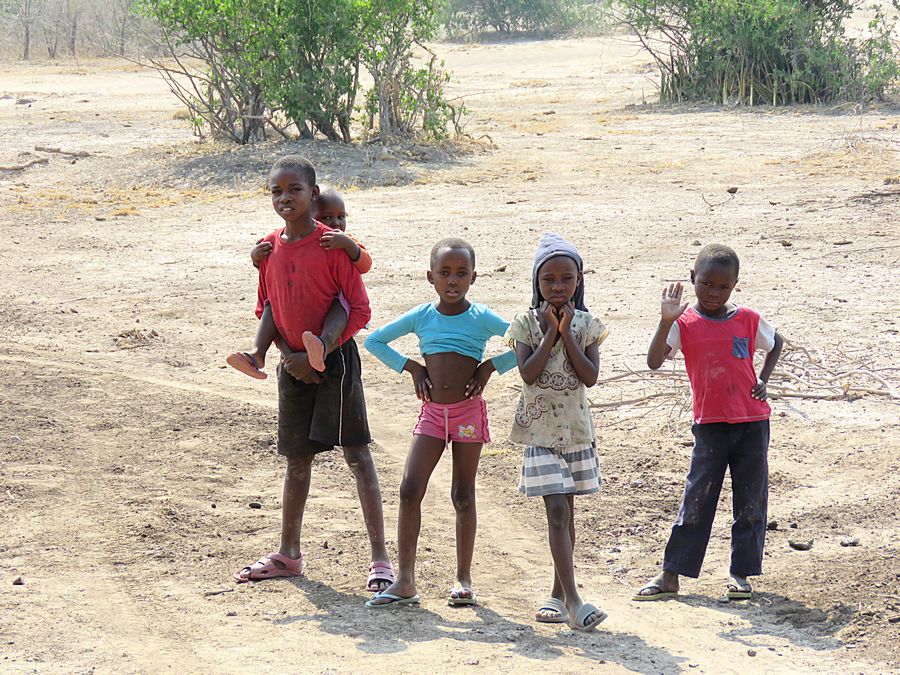
Although we walked to the tree, we rode back to the lodge.
Guess they didn't want us walking more than 3 miles.
Here some village kids wave to us.
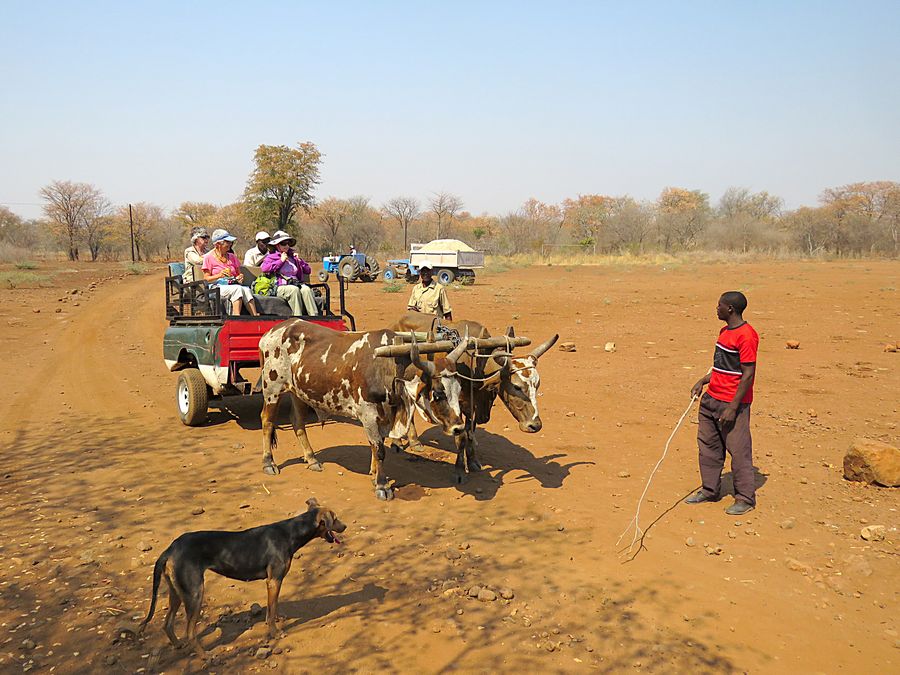
We took turns riding in an ox cart with the other half
riding in a safari vehicle.
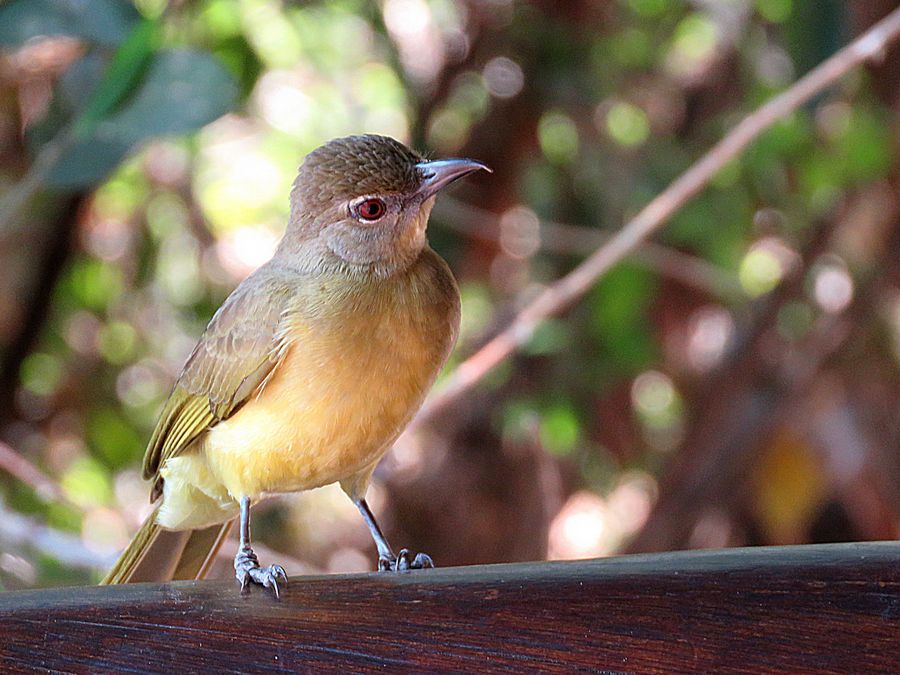
Another yellow bellied bulbul - Has red eyes. It is a monogamous bird
which means that the bird finds and breeds with one partner
for the rest of its life.
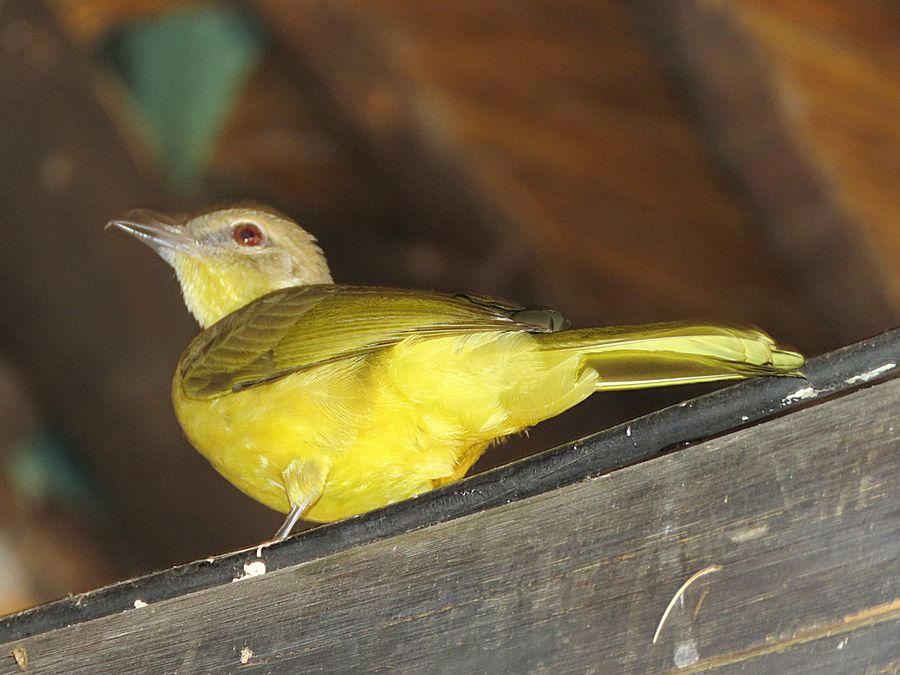
There were a number of yellow bellied bulbuls hanging around
the lodge area. This one is perched on a rafter above the outdoor
dining area.
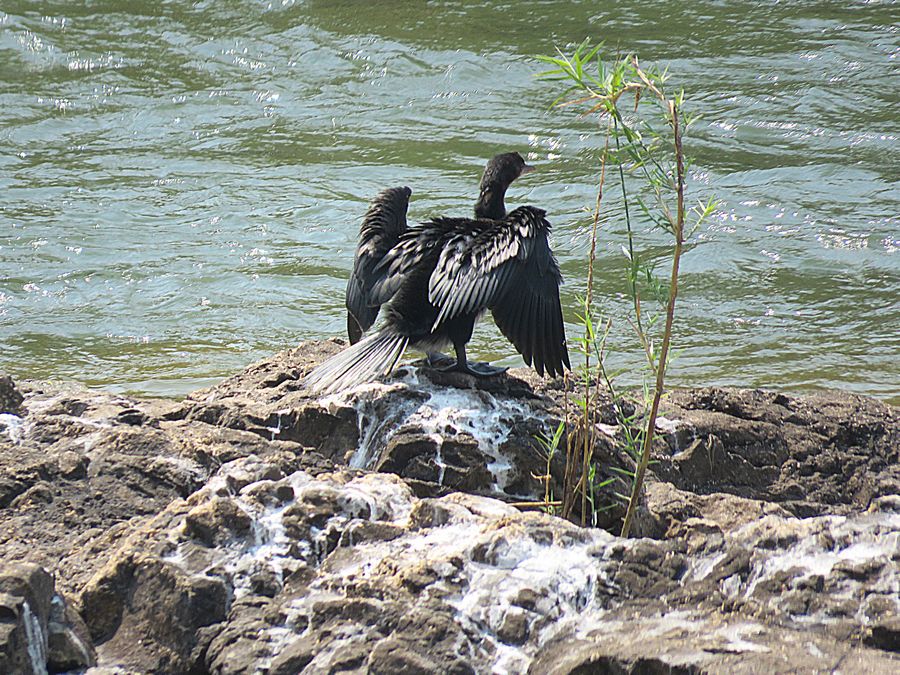
Another Reed Cormorant - Since the wings
are not waterproof, they often perch with wings outstretched
so they can dry.
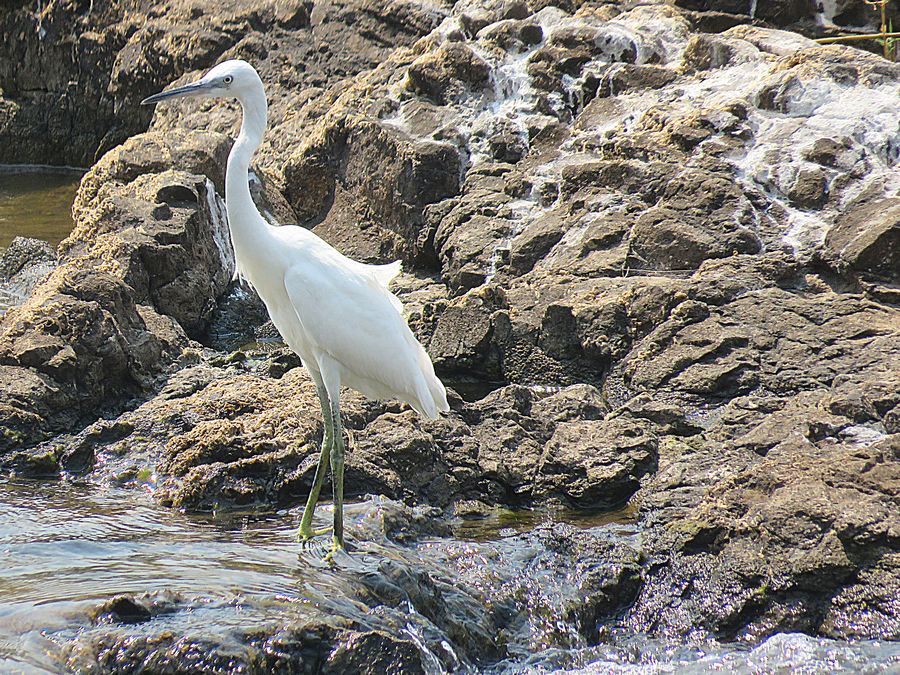
Great white egret - From my cabin, I could sit outside on the
deck in the back and watch birds hunting.
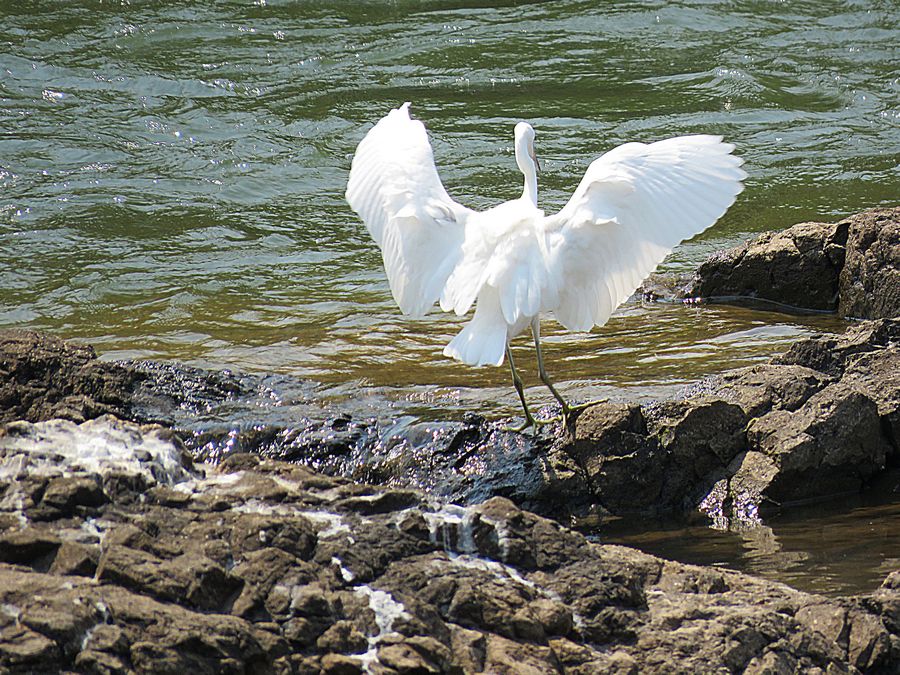
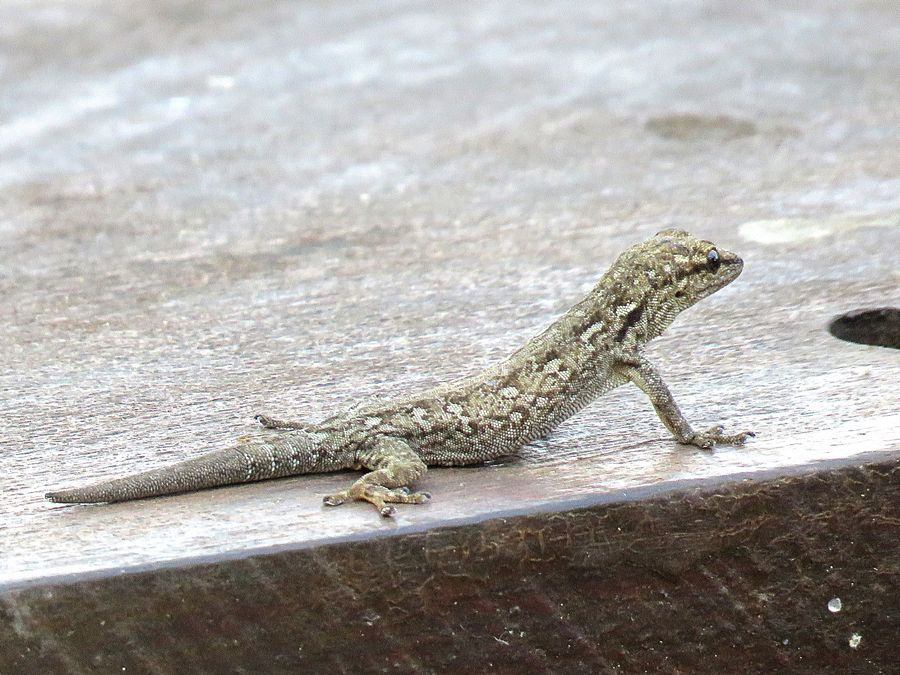
Lizards were quite active around the lounge area of the lodge.
Not sure what kind this is.

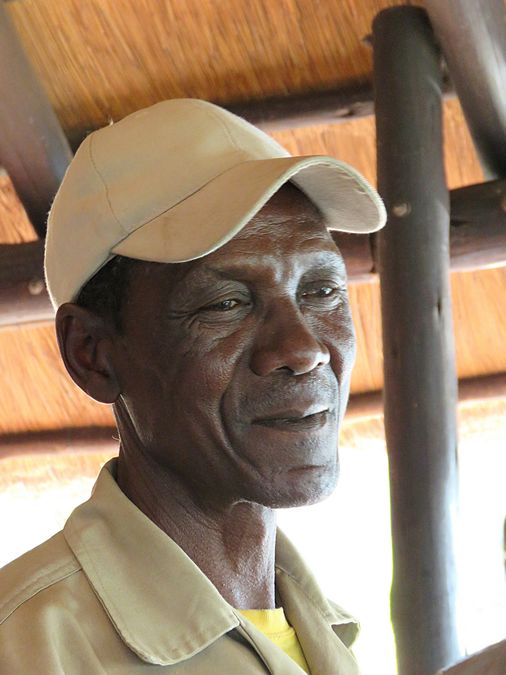
Charles, age 61, father of 6, spoke to us about Namibia's
fight for independence from German, then South African
rule. Charles joined SWAPO, a guerrilla group fighting for
independence and spent 26 years in the bush fighting. During that
time his father
was tortured and killed by forces trying to find
SWAPO fighters. Namibia gained independence March 21, 1990.
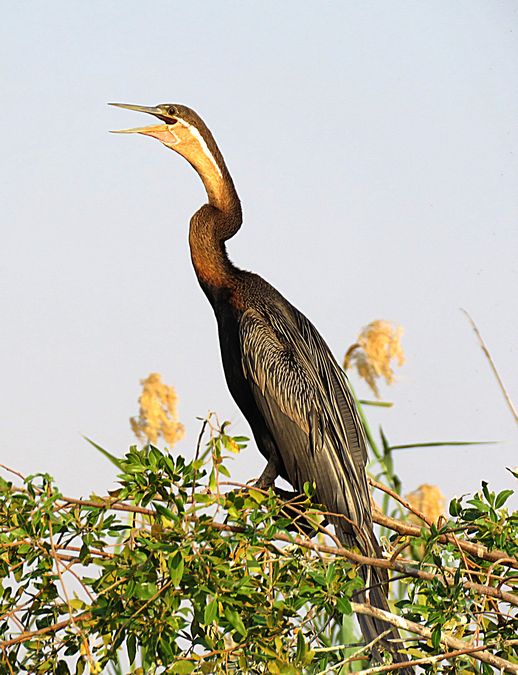
African Darter - also saw a lot in the Okavango Delta. It is
known for its long snake-like neck and is often seen
holding its head in a S shape, like here.
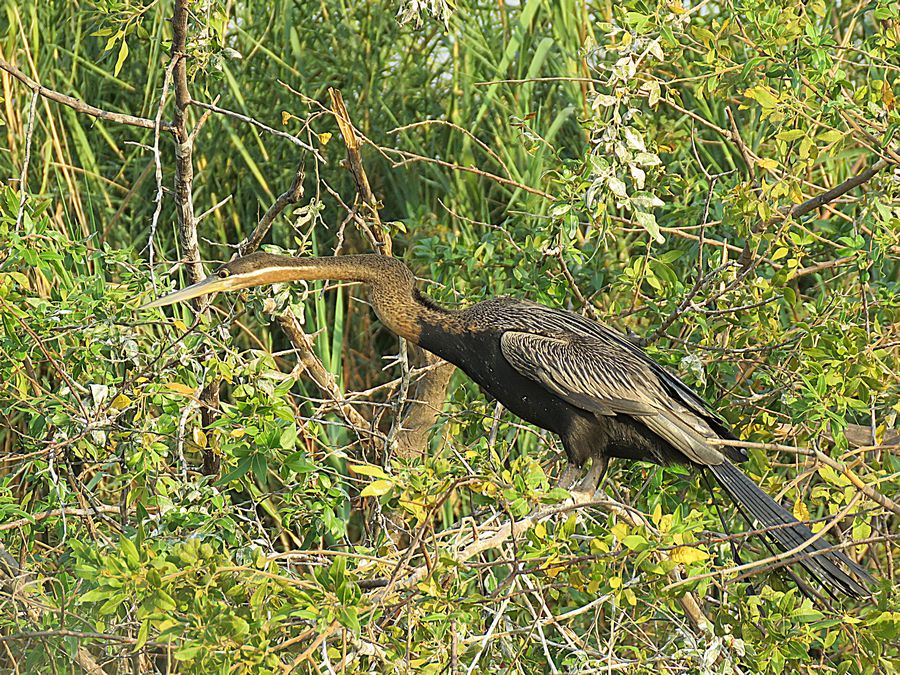
The Darter put its head and neck in interesting
positions while we watched it.
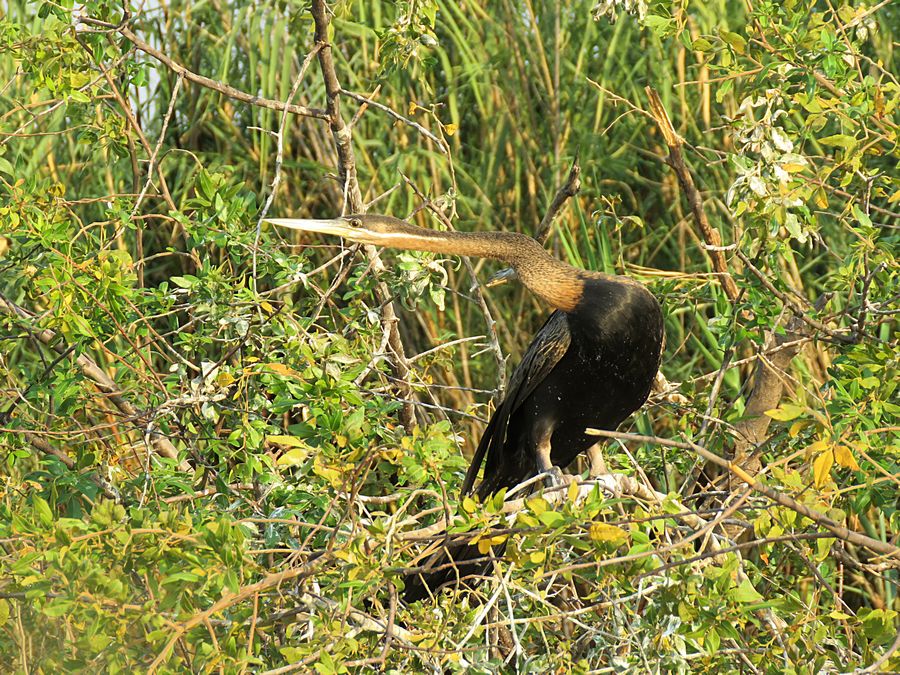
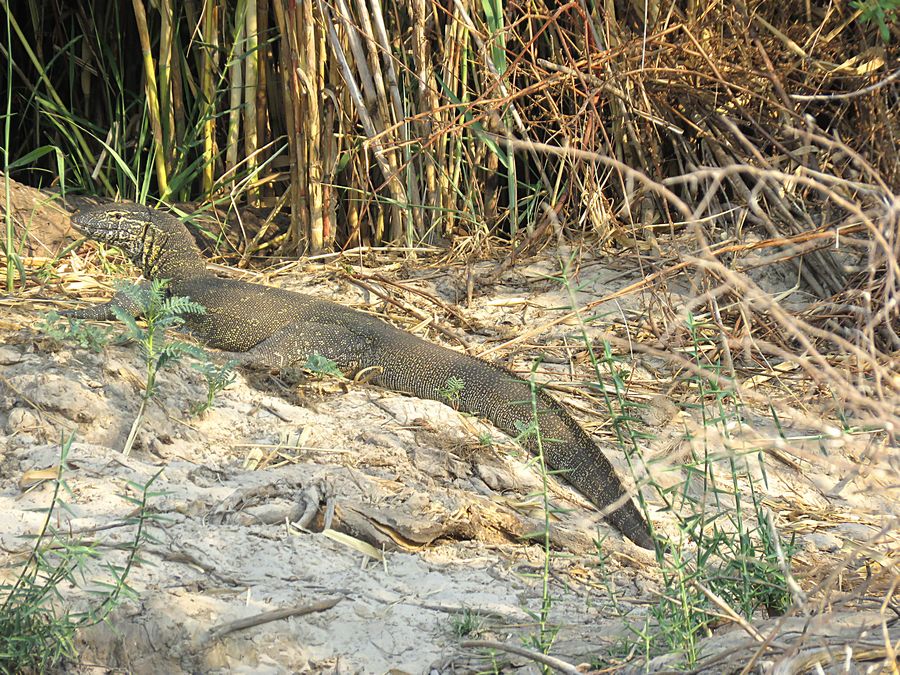
Another Water Monitor - It feeds on anything it can overpower,
including crabs, frogs, and the eggs of birds and crocodiles.
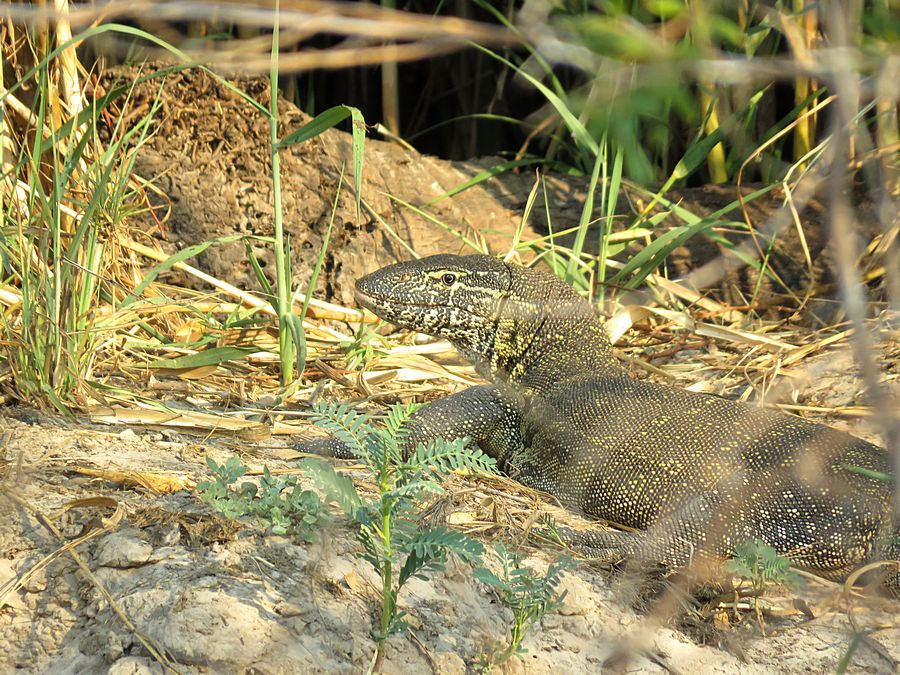
Females lay 20 to 60 soft-shelled eggs in a hole in an active
termite mound.
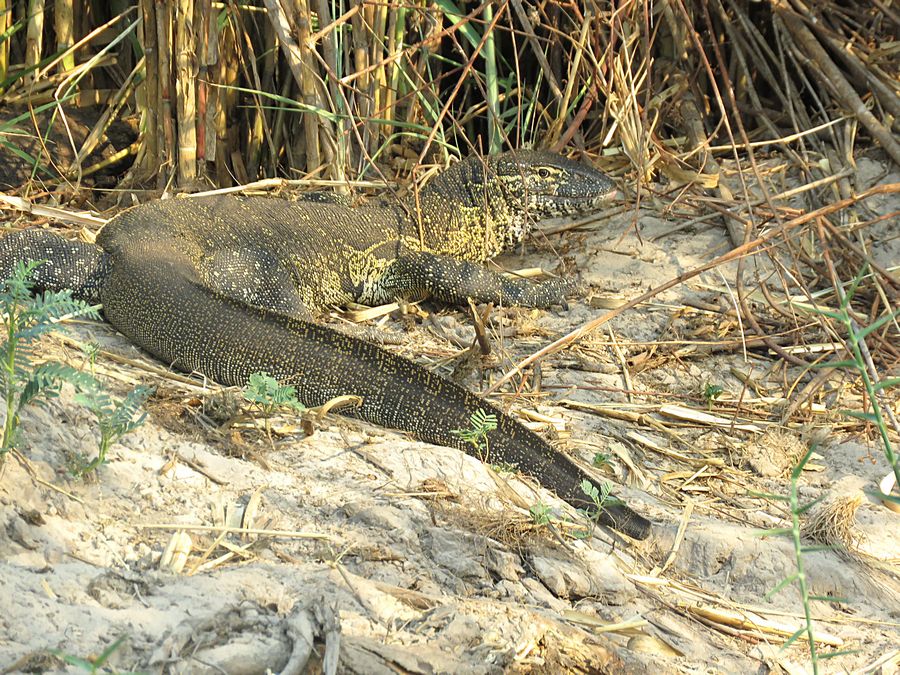
The strong tail is used in self defence.
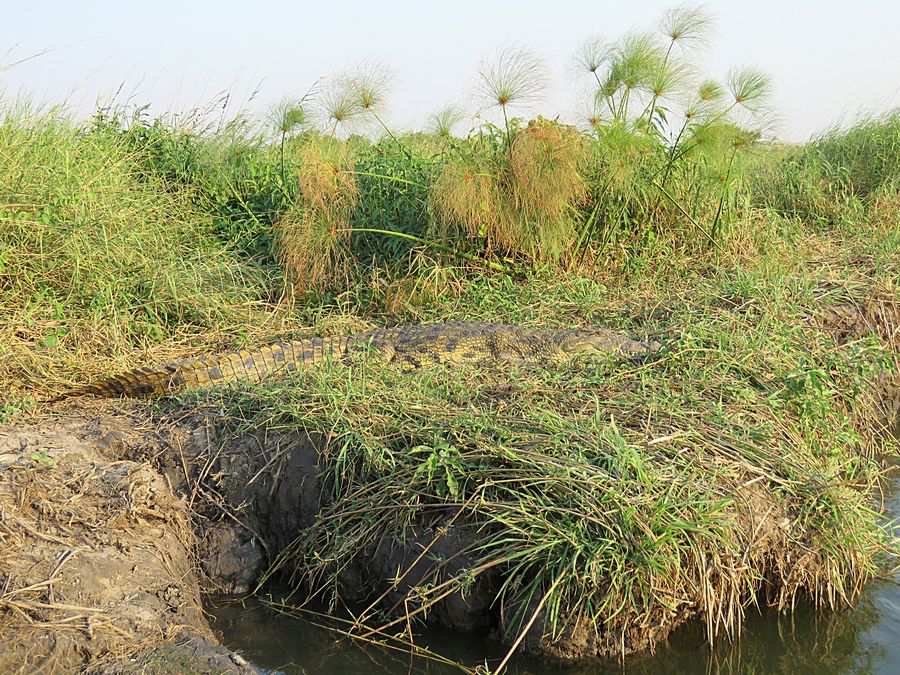
A crocodile on the shoreline. Note the papyrus, a
tall aquatic plant,
in the background. It is common to this area.
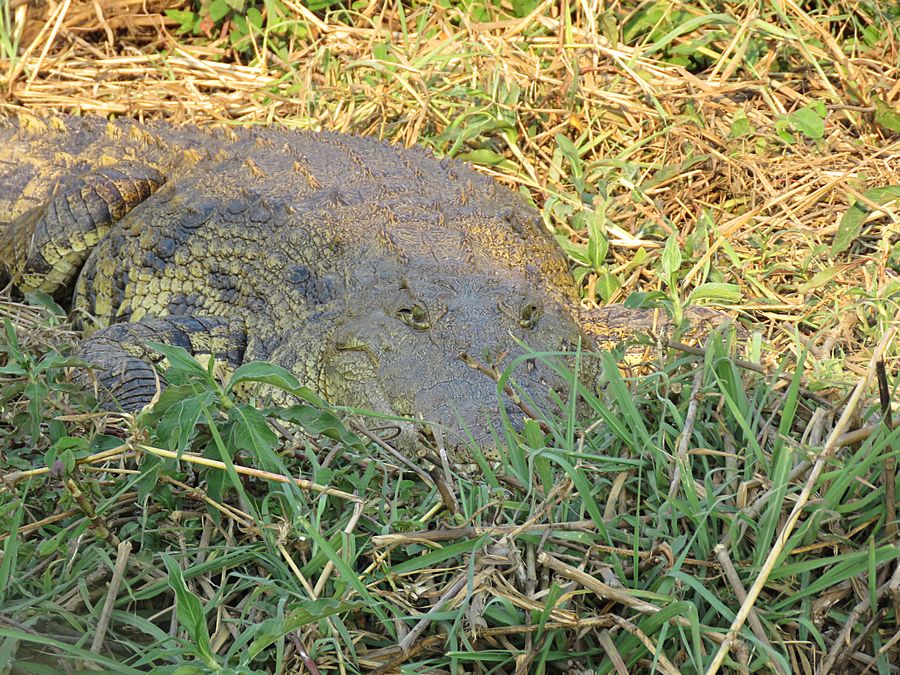
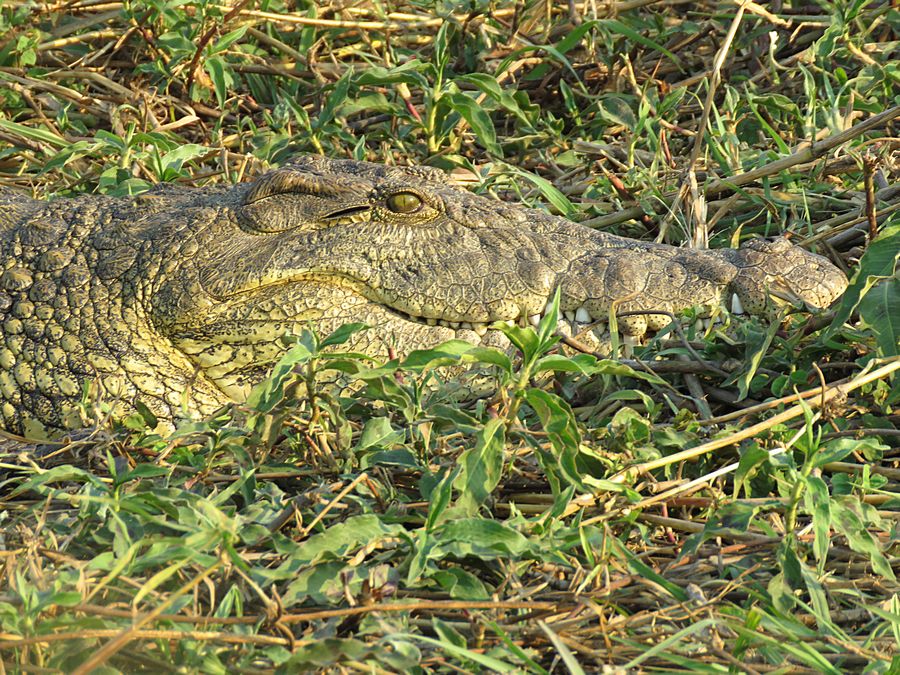

This crocodile grew tried of us watching and suddenly stood
up and very quickly moved into the water. The sudden
and unexpected movement momentarily scared us.
I was in the front of the boat just a few feet away
when the croc took off.
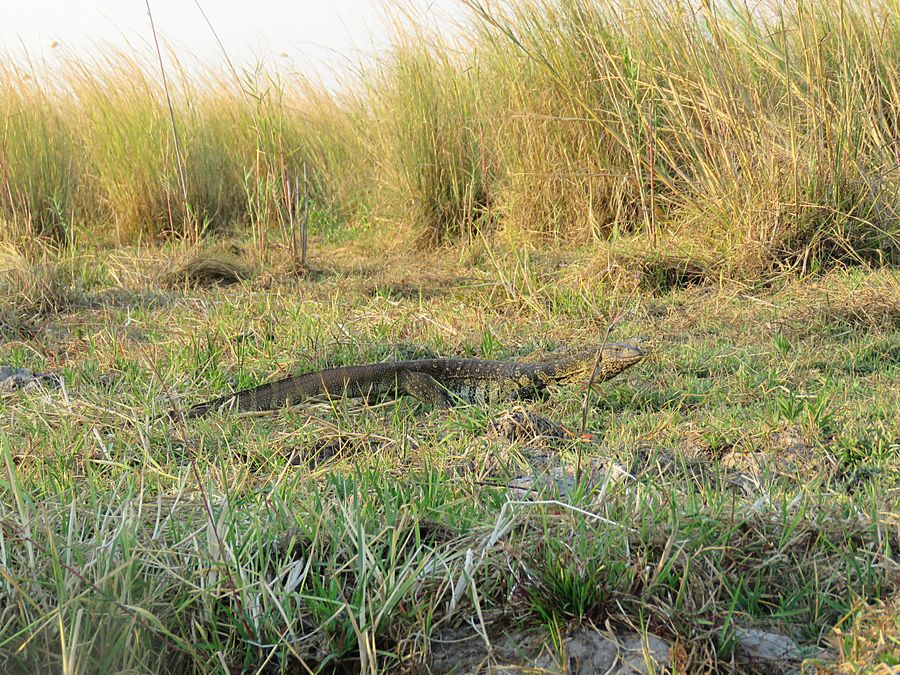
Another water monitor. Their short powerful legs have strong claws
which they use both for digging and climbing.
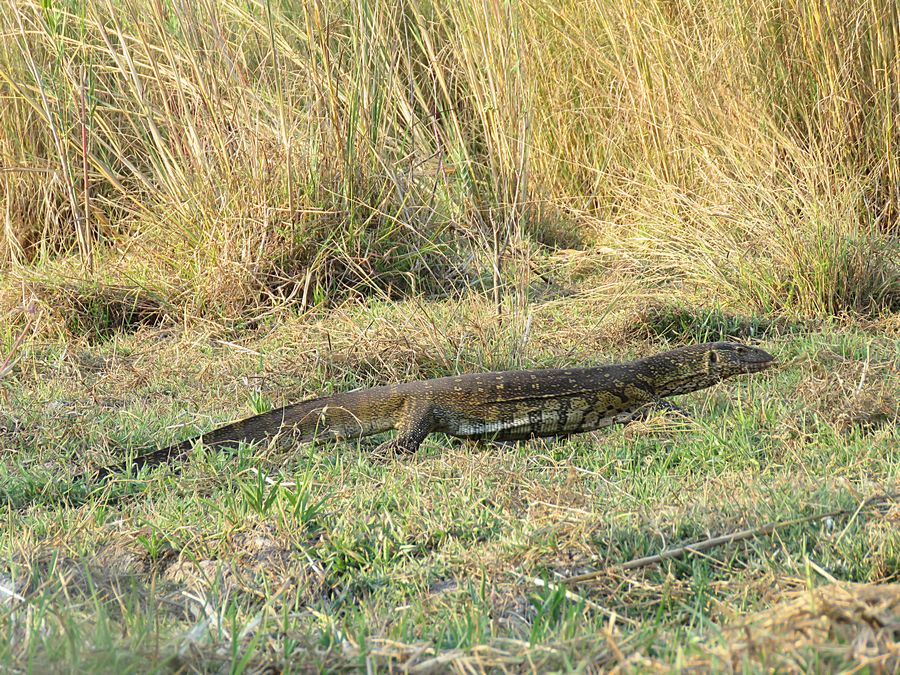
Water monitors are great swimmers, folding their legs in and using
their tails like crocodiles, and can stay underwater for well over half
an hour. They can run astonishingly fast over a short distance,
and typically head for water when disturbed.
THE END - IMPALILA ISLAND, NAMIBIA
Link to Chobe National Park, Botswana
Pat's Home Page